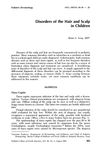Prostaglandin D2 Inhibits Hair Growth and Is Elevated in Bald Scalp of Men with Androgenetic Alopecia

TLDR Prostaglandin D2, found in higher levels in bald scalps, stops hair growth, suggesting that blocking its receptor could potentially treat hair loss.
In 2012, Garza LA and colleagues conducted a study that identified prostaglandin D2 (PGD2) as a key player in the pathogenesis of androgenetic alopecia (AGA), a common form of hair loss. The researchers compared gene expression profiles between AGA-affected and non-affected scalp samples and found increased expression of prostaglandin D2 synthase (PTGDS) in balding scalp. They also found that the synthase product prostaglandin D2 (PDG2) and the non-enzymatic 15-deoxy-delta 12,14-prostaglandin J2 (15d-PGJ2) were overexpressed in balding scalp compared to non-balding controls. In addition, they observed that an increase in PTGDS and PGD2 levels was associated with the regression phase of hair follicles in mice. Transgenic mice overexpressing PGD2 in the skin exhibited hair loss resembling AGA, suggesting a key role of PGD2 in AGA pathogenesis. The study also found that the hair growth inhibition of PGD2 was cancelled in the absence of its receptor, GPR44, suggesting that blocking GPR44 may be a promising strategy for the treatment of AGA.

